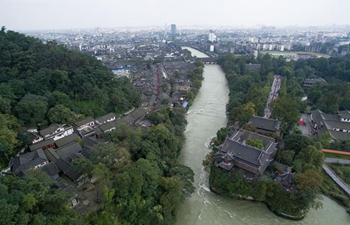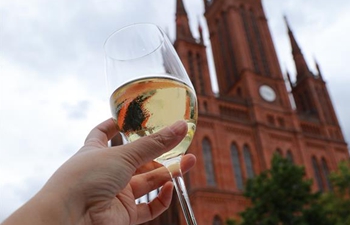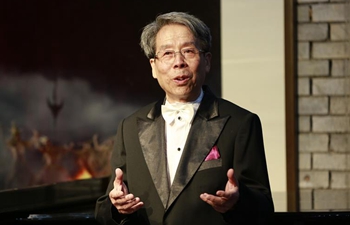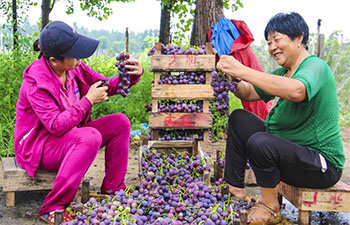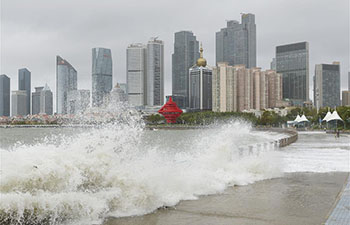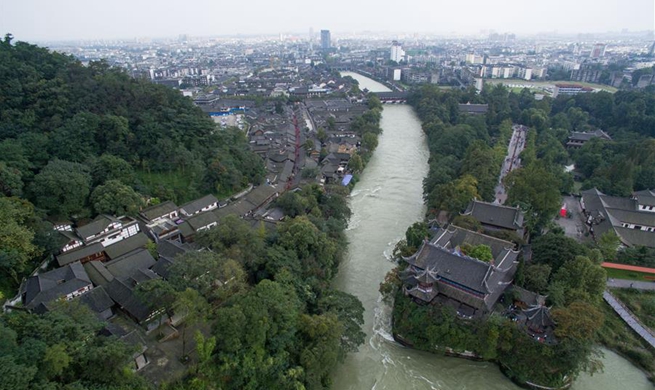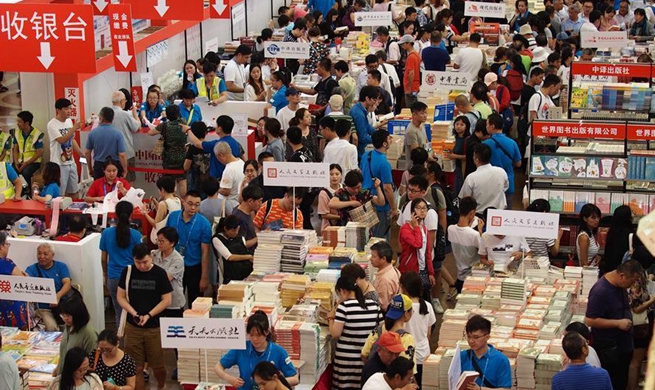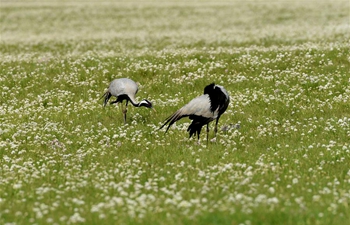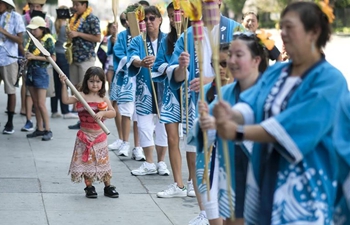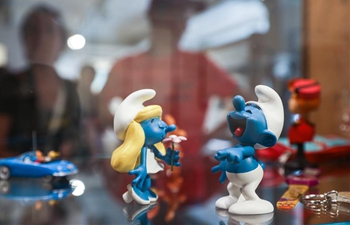YINCHUAN, Aug. 15 (Xinhua) -- Old stone buildings with tiled roofs, ancient sculptures, ceilings made of dumped cork, and a stone table made of a century-old cart wheel, the Yuanshi Chinese chateau at the eastern foot of Helan Mountain in northwest China is unlike anything you will find in Europe.
"We built the chateau out of stones from the Gobi," says Yuan Yuan, 26, the owner of the Yuanshi chateau, which stands in Ningxia Hui Autonomous Region. Yuan returned to her hometown after graduation, eager to pass down the winemaking skills and secrets of her father's generation.
Starting from scratch and facing competitive global wine brands, Yuan's winery is like a green shoot struggling for living in a crevice among stones. The green vineyards interlaced with mounds of stones distinguish it from typical grape cultivation bases. For Yuan and her father, the stones are the vestige of the Gobi mining age in Ningxia.
"There was nothing but stones. In the 1980s, my father opened a quarry, manufactured building materials and sent them to the capital city of Yinchuan," Yuan says.
Rampant mining at the time left deep pits in the open air.
"The mining industry damaged the local ecosystem. Whenever the sandstorm came, cars easily got a sideslip," her father Yuan Hui says. Around 1998, he started to plant trees in order to restore the local environment that had been so scarred by the industry. Since then, over 2 million plants have gradually covered the landscape of about 113 million square meters.
However, the Yuans will never forget how the land was back then. It is why they called their chateau Yuanshi, meaning "born of stones."
Yuan Hui loves all kinds of stone. "All the waste was misplaced resources, so were the stones in the Gobi," he says. Starting in 2008, he spent almost six years designing and building the stony chateau himself, decorating the walls of wine cellars with this "wasted" stone.
ROOTED IN LOCAL CULTURE
"Wine is both global and local," Yuan Yuan says, as she talks excitedly about the introduction of grapes to China in the Han Dynasty (202 BC - 220 AD).
At first her winery invited foreign winemakers to grow the grapes, but due to difference in climate, western techniques did not work.
"In 2015, experts from China Agriculture University worked with us and offered scientific guidance on growing grapes. They did experiments in our fields and our vineyards, which now act as a research base for their postgraduates," she says.
Li Wenchao, an official with the region's grape industry bureau, says that Chinese wine should cater to Chinese drinkers. "In Western dining culture, different courses are paired with different wine. But in China, people tend to choose wine according to their personal dietary habits."
Zhao Shihua, a researcher with the bureau, says that the Chinese want "sweet and thick wine." Every year, chateaus in Ningxia meet with their dealers to discuss customers feedback, and then adjust the taste of their wine accordingly. "There are eight major culinary traditions in China and we make different types of wine accordingly," Zhao says.
One particular type of new wine from the chateau features fragrance of tropical fruits such as lychees and pineapples.
"We also plan to offer Chinese food with our wine in the chateau so that more and more people can learn about our wine culture," Yuan Yuan says.





